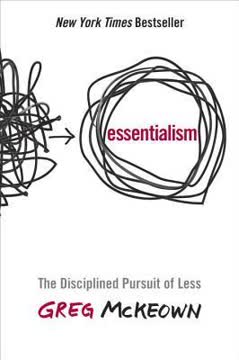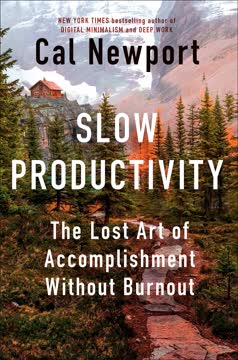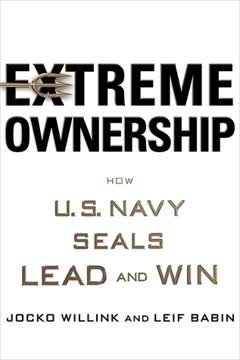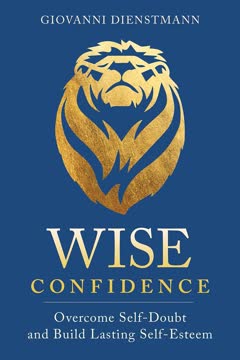Key Takeaways
1. Wise Confidence is a Balanced Power
When you have self-confidence, you believe in yourself, and you show up to every challenge in life with courage, optimism, integrity, and determination.
Beyond arrogance. Wise Confidence is a healthy, balanced, and deep sense of self-assurance, distinct from arrogance or self-doubt. It's not about being flawless or superior to others, but an unshakable belief in your own potential. This balanced approach respects the path ahead while trusting your capacity to overcome challenges.
Five core elements. True self-confidence is built upon five interconnected elements:
- Self-belief: Unshakable conviction in your ability to accomplish tasks.
- Courage: Willingness to face challenges and act despite fear.
- Optimism: Anticipating success and taking a leap of faith.
- Integrity: Being whole and undivided, with no internal self-sabotage.
- Determination: Inner resolve and willpower to move forward.
This holistic view ensures confidence is sustainable and grounded.
Competence vs. belief. While competence (self-efficacy) in a specific skill can boost confidence, true Wise Confidence is an a priori attitude—a general inclination to believe in yourself regardless of past successes. It's the initial deposit, not the final profit. This core confidence, rooted in identity and mindset, empowers you to build skills rather than relying on them for self-worth.
2. Your Identity Shapes Your Reality
Your identity is your personal foundation. Just like a tall building needs a deep foundation, the life you create for yourself will always be determined by the depth of your personal foundation.
Identity as a map. Your identity, formed largely by childhood conditioning, acts as a subconscious map that dictates how you perceive yourself, the world, and how you should navigate it. This deeply ingrained story determines your thoughts, feelings, and actions, making it the most powerful, self-perpetuating force in your life. Most people live within this "box" without realizing they can change it.
A story, not a truth. The crucial insight is that your identity is not an immutable truth, but a story you've come to believe. This means you have the ultimate creative power to rewrite it. Any lasting self-transformation must begin at this foundational level; superficial changes like positive thinking layered over a limiting identity are unsustainable, as the old foundation will always pull you back.
Living inside out. The path to true confidence involves dismantling your old, conditioned identity and consciously creating a new, aspirational one. This is "living inside out"—deciding who you are and consistently affirming that decision through your thoughts, words, and actions, rather than seeking external validation or being defined by past experiences.
3. Design Your Aspirational Self
Since consciousness can take any shape, in the play of life you can take on any role.
Beyond conditioning. Designing your new identity means choosing who you want to be, free from the constraints of past conditioning. This involves clarifying your core values and aspirations, then crafting a self-image that aligns with them. It's an act of ultimate creative power, allowing you to adopt new maps for life that lead to desired destinations.
Symbols and Power Words. Two powerful methods help in this self-design:
- Choose Your Symbols: Identify fictional characters, role models, or universal archetypes (e.g., Warrior, Explorer, Guide) that inspire you. These serve as templates for the qualities, emotions, and journeys you wish to embody.
- Choose Your Power Words: Distill the essence of your desired self into three meaningful words (e.g., Calm, Confident, Creative; Self-Trust, Fearlessness, Contentment). These words become your compass for living, representing the new strengths and states you are actively cultivating.
Accessing your template. The qualities you admire in your chosen symbols and Power Words already exist within you, at least in seed form. The process is about trusting this inherent potential and actively accessing it. This involves being open to a new identity, imagining it as real, intending to synchronize with its "frequency," and confirming it daily through self-talk and actions.
4. Release Your Conditioned Past
You can only be reborn as your new self after you die as your old self.
The fear of letting go. The conditioned identity, though potentially painful, feels familiar and "true," making the prospect of letting it go scary. This transition period can evoke a significant fear of the unknown, as it feels like a psychological "death" of the old self. Overcoming this requires courage, faith in the process, or the unbearable pain of remaining the same.
Facing the worst. To prepare for this release, confront your resistances and fears head-on. List all potential negative outcomes of adopting your aspirational identity, then systematically question their likelihood, severity, and potential solutions. This "Black and White Clarity" exercise starkly contrasts the pains of staying stuck with the benefits of transformation, fueling motivation.
Cultivating ownership. Blaming others or oneself reinforces the old identity. True liberation comes from taking full ownership of your life, emotions, and healing process. This means focusing on what you can control (your responses, choices, self-talk) and accepting what you cannot. By refusing to be a victim and embracing responsibility, you free up energy to build your new, confident self.
5. Master Your Inner World with Awareness Tools
Your goal is not to battle with the mind, But to witness the mind.
Shifting self-talk. Our self-talk, beliefs, and mindsets are habits, not truths. Cognitive distortions like filtering, overgeneralizing, or catastrophizing undermine confidence. The "Deconstruct and Replace" method involves:
- Identify: Pause and recognize the negative thought or thinking error.
- Question: Challenge the thought's accuracy and helpfulness.
- Shift: Reframe it with a more empowering, positive, or accurate alternative.
This active engagement helps change ingrained thought patterns.
Witnessing thoughts. Alternatively, "witnessing" involves stepping back and observing thoughts without believing or engaging with them. Like watching clouds pass, you acknowledge their presence but don't let them define you. This meta-awareness creates space, reducing the power of negative thoughts and freeing energy for confident action. Aids like repeating thoughts in a silly voice can "break the spell."
Practical techniques. Two powerful awareness tools are:
- Not Now Technique: Postpone unhelpful thoughts (doubts, fears, distractions) by firmly saying "Not now" and redirecting attention to the present task. This "snooze button" builds focus and momentum.
- ROAR Method: For strong emotions (Recognize, Observe in body, Accept, Release with breath). This combines witnessing with embodiment to dissolve intense feelings, allowing you to re-center and move forward.
6. Act Courageously to Build Confidence
Do the thing you fear and the death of fear is certain.
Action fuels confidence. Confidence is not a prerequisite for action; it's often a result of it. Acting despite fear, even with self-doubt present, is a direct way to build courage and self-belief. Inaction, conversely, feeds fear and keeps you stuck in your comfort zone, limiting growth and fulfillment.
Facing fears through exposure. Modern culture often promotes risk aversion, but true growth requires embracing uncertainty. "Exposure therapy" (systematic desensitization) is key:
- List Opportunities: Identify situations where fear holds you back.
- Make a Plan: Sort fears from easy to hard, breaking down big challenges into "baby steps" that feel uncomfortable but not overwhelming.
- Develop Mindset: Expect discomfort, know you're in control, and commit to the process.
- Exposure (Imagination/Real Life): Visualize or actually engage with the feared situation, staying until fear subsides.
Continuous improvement. Beyond facing fears, consistently learning new skills also builds confidence. Whether it's a challenging hobby or a vital life skill, the process of overcoming obstacles and making progress reinforces your belief in your capacity. Approach learning with a growth mindset, patience, and perseverance, linking it to your aspirations for deeper purpose.
7. Cultivate Empowering Relationships
Are the people in your life feeding your self-confidence or your self-doubt?
Influence matters. Your relationships profoundly impact your self-confidence. You unconsciously adopt the narratives, habits, and biases of those around you. To foster confidence, surround yourself with people, books, and media that affirm your aspirational identity, inspire growth, and believe in your potential.
Remove toxic influences. Identify and distance yourself from "toxic people" (narcissistic, manipulative, overly critical) who undermine your self-worth. They often exploit your virtues (like kindness or tolerance) and fears (like loneliness or rejection) to keep you disempowered. It's not selfish to cut ties; it's an act of self-respect and a commitment to your well-being.
Set and enforce boundaries. For relationships you wish to maintain, master assertive communication. This means:
- Clarity and Firmness: State your needs and limits unapologetically. "No" is a complete sentence.
- Proportional Response: If boundaries are crossed, respond immediately and firmly, scaling your reaction as needed.
- Unassailable Spirit: Learn to be unaffected by others' attempts to shame or manipulate you. Your self-worth is not dependent on their approval.
This practice reinforces your value and trains others how to treat you.
8. Discipline is the Engine of Transformation
Discipline is choosing between what you want now and what you want most.
The necessity of discipline. Self-discipline is crucial for self-confidence because it ensures consistent practice of new behaviors, helps overcome internal and external obstacles, and inherently builds self-belief through consistent action. It's not self-punishment, but self-respect—prioritizing your deepest aspirations over immediate gratification.
Daily disciplines. Integrate the Wise Confidence framework into your daily life:
- Morning Practice: Begin each day with meditation and the Daily Alignment Practice (remembrance, affirmation, visualization) to connect with your aspirational identity.
- Ongoing Shifting: Throughout the day, use the PAW Method (Pause, Awareness, Willpower) to consciously shift from conditioned reactions to aspirational responses, applying techniques like mindset shifts, witnessing, or anchoring.
- Evening Review: Conclude with the GAIA journal (Gratitude, Awareness, Intention, Alignment) to reflect on progress and set intentions for the next day.
Organize and focus. Boost confidence by optimizing your environment and attention:
- Organization: Tidy your physical and digital spaces, and streamline routines to reduce friction and free up mental energy.
- Focus: Cultivate both macro-focus (aligning life with core values/aspirations) and micro-focus (concentrating on single tasks) to enhance willpower and effectiveness.
9. Tap into Your Spiritual Core
With the realization of one’s own potential and self-confidence in one’s ability, one can build a better world.
Unbreakable essence. Many spiritual traditions teach that your true essence (Soul, Spirit, Consciousness) is pure, unshakeable, and infinite. Anchoring your self-confidence in this transcendental core provides an ultimate foundation, deeper than any trauma or shortcoming. This belief fosters integrity and self-belief, knowing you are a spark of infinite potential.
Deep purpose. Spirituality often emphasizes that each individual has a unique purpose (dharma) to fulfill. Embracing this deep sense of purpose provides immense courage and determination. It shifts the mindset from "I should do this" (external pressure) to "I must do this" (inner alignment), fueling an unwavering commitment to growth and contribution.
Life as training. Adopting the belief that "life is happening for you, not to you" transforms adversity into opportunity. Every challenge becomes a test, an exercise to polish your soul and develop resilience. This optimistic outlook, rooted in faith in an intelligent universe, cultivates courage and optimism, essential ingredients for Wise Confidence.
Mind matters. Spiritual philosophies often assert that consciousness shapes reality. Your mind, a spark of the cosmic Source, has the power to manifest intentions. When concentration, willpower, faith, and feeling are consistently applied to a thought or desire, it gains magnetic power, increasing the likelihood of its materialization. This metaphysical understanding supercharges the practical tools of self-confidence.
10. Patience, Perseverance, and Determination are Key
Arise, awake and do not stop until the goal is reached.
Patience for the journey. Self-transformation is a gradual process, like chipping away at a wall. Patience means committing for the long term, accepting that progress may be slower than expected, and not getting disheartened by setbacks or temporary dips in confidence. It's about releasing the urge for quick fixes and playing the long game.
Perseverance through adversity. When you have perseverance, you get up every time you fall. This requires a growth mindset—the belief that growth and change are always possible. Welcome challenges as opportunities to strengthen your soul, and continue taking baby steps forward, regardless of negative inner voices. This consistent effort, even when difficult, builds profound self-confidence.
Determination fuels all. Both patience and perseverance naturally arise from deep determination. This is a clear vision coupled with an unwavering commitment to fulfill it, a "Never Zero" resolve. When your mind is filled with such intense desire and conviction, fears, anxieties, and doubts are overridden. This inner fire makes obstacles melt away, forging an unshakeable self-confidence that enables you to achieve anything.
Last updated:
Review Summary
Wise Confidence is highly praised for its comprehensive approach to building self-confidence. Readers appreciate the practical exercises, in-depth research, and balanced perspective on personal growth. Many find it life-changing, offering valuable insights and tools for overcoming self-doubt. The book is seen as a natural complement to the author's previous work on mindful self-discipline. While some reviewers with high confidence found less value, most readers recommend it for those seeking to develop authentic, lasting self-confidence.
Similar Books














